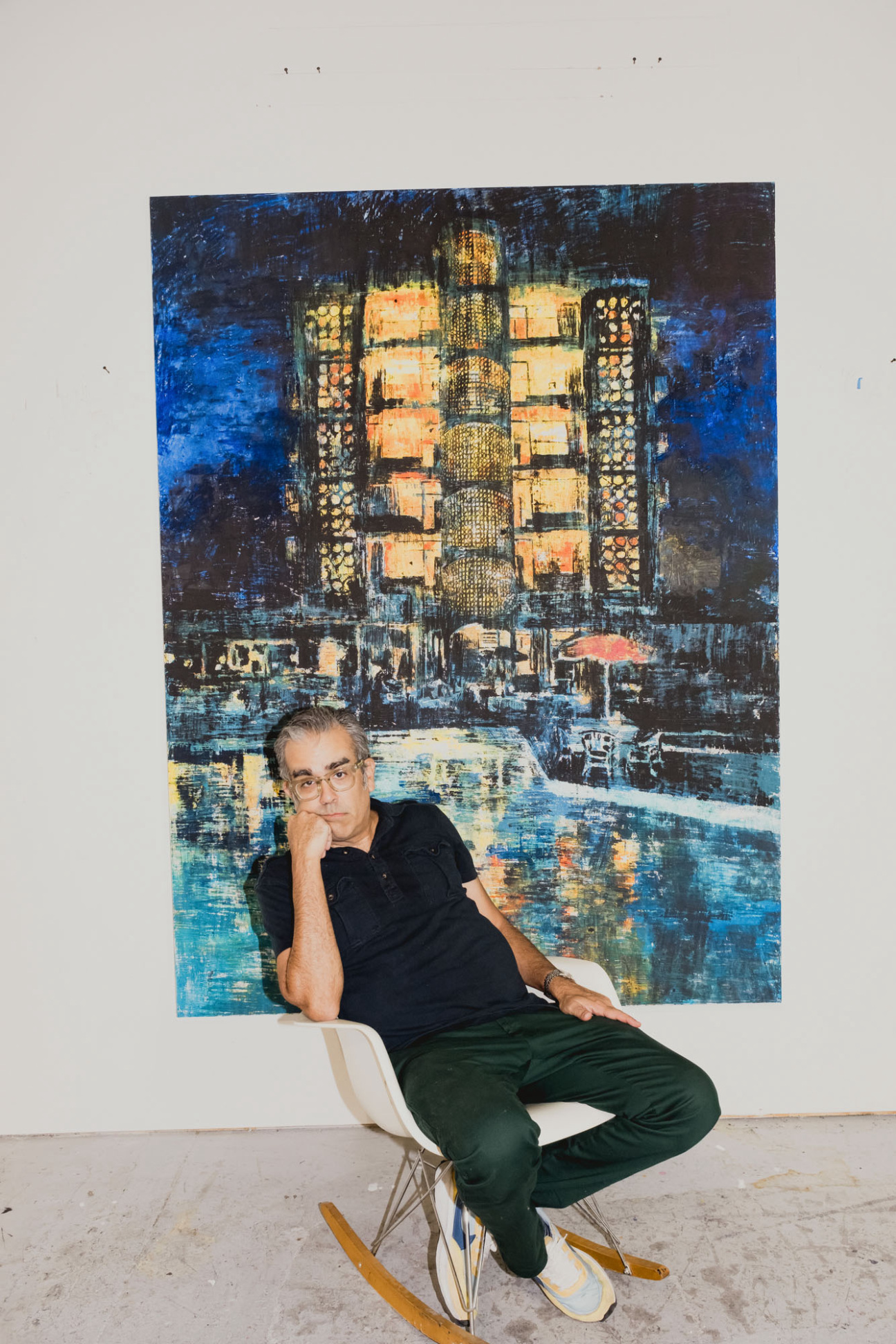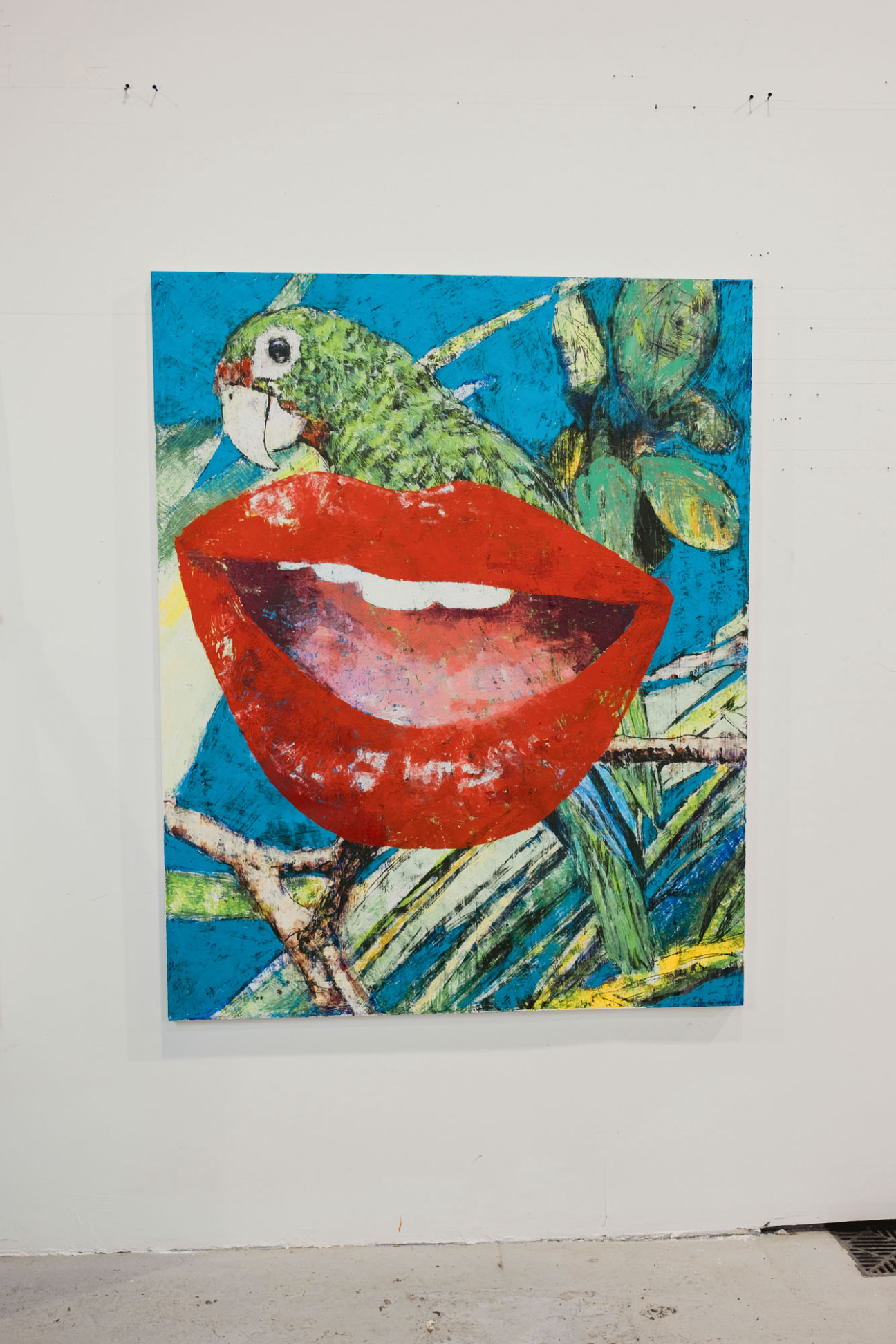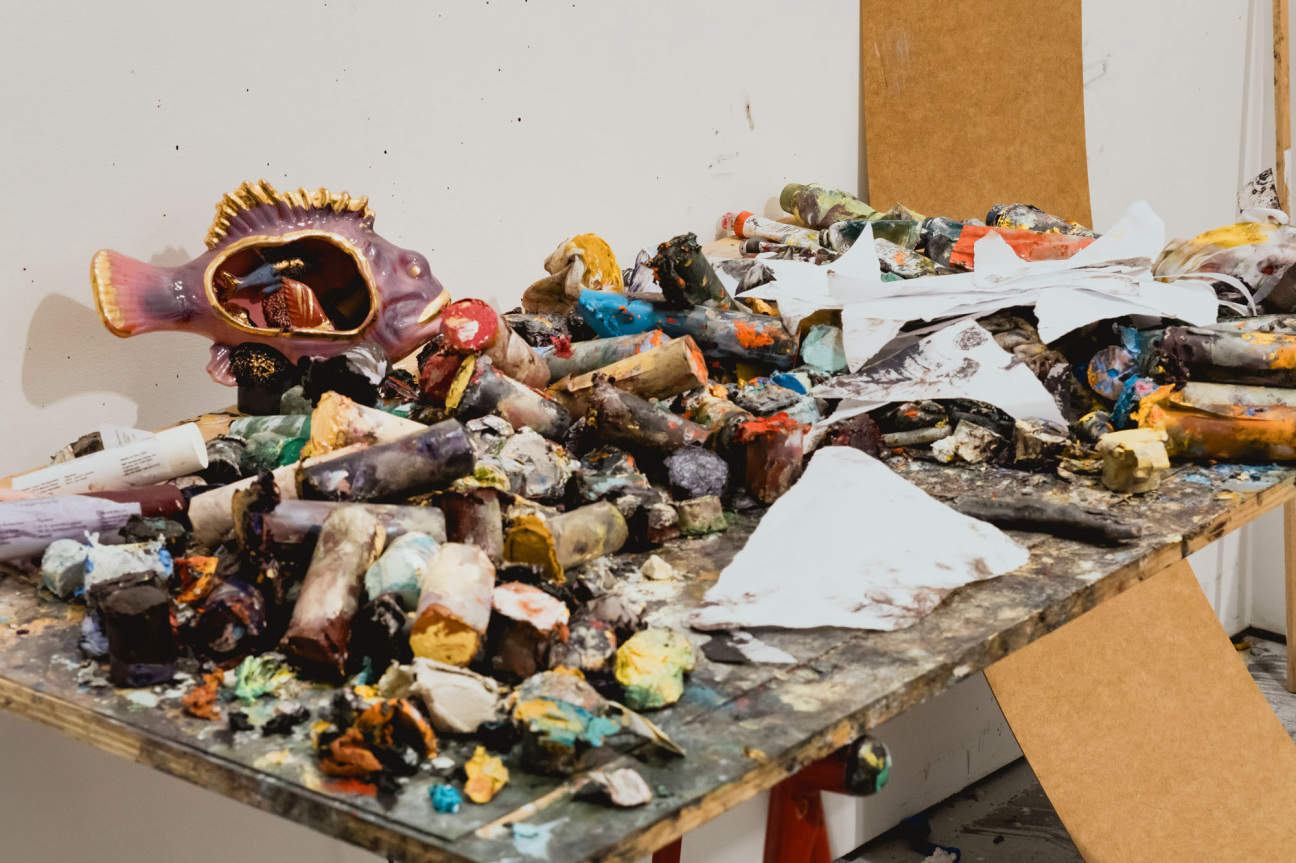
Buildings took on a profound significance for Enoc Perez—and many of his fellow New Yorkers—in September of 2001. Suddenly, says the artist, “We were so painfully aware of architecture meaning something.” Known for sought-after, sepia-drenched paintings and oil stick drawings of the international-style hotels that dot his native Puerto Rico, Perez came to New York to attend art school in 1986 and never left.
“They’re like Duchamp’s readymades,” he says of the structures he’s drawn to, from Puerto Rico landmarks to New York skyscrapers. As functional as they are, the buildings represent utopian ideals of progress—subjects he seeks to elevate in his compositions. Perez describes a similar light bulb moment in 2016, when he discovered the aesthetic “goldmine” that is diplomatic architecture and began painting his series of U.S. embassies, from Ho Chi Minh City to Baghdad.
“The whole idea of America came into question,” he says of the political symbolism of such structures after Trump’s election. Against the backdrop of vintage travel posters, palm trees, and Pop art, Perez has a signature, melancholy-suffused style. Among his most poignant works are a series of Bacardi still lifes—the artist calls them self-portraits—painted during a rock-bottom period before he became sober.
Fifteen years ago, Perez bought an East Hampton home, where he holes up to work for the entire summer season. Before migrating out East, he invited CULTURED into his New York studio to talk about his South Fork routine and the body of work he’s making for his upcoming show at Adrian Sutton Gallery in Paris this fall, a European outpost for Perez’s work alongside Galerie Enrico Navarra and Ben Brown Fine Arts in London.

CULTURED: In your new paintings, you’ve superimposed a huge car and lips on two of your canvases, taking your Pop art influences to another level. What was the inspiration?
Enoc Perez: Every time I come into the studio, it’s like jumping into an abyss. On the way down, I hope to grab onto some kind of breakthrough as I go. That doesn’t happen every day, so I try different things. For example, with this car painting, I was playing around with this app my children were using to make mashups on their phones. I had some paintings I wasn’t completely sold on that I had put aside. I said, “Let’s see how they work against another image.”
The car says “se vende,” “for sale” in Spanish, which is something I saw all the time growing up in Puerto Rico. The painting underneath the car was based on a vintage Pan Am Caribbean travel poster. It’s my way of working at collage. I’m not someone to glue something on canvas. I have to paint it. But at the end of the day, my job as an artist is to make you look at my work. I want to paint cool shit that I’d want to have on my walls.
CULTURED: How do you work differently during East Hampton summers than in your Long Island City studio all year?
Perez: My studio in the Hamptons is really a two-car garage that a friend of mine made into a more dignified place. I work fully here from June to August. For the first seven summers, it was a completely secret studio—I loved that. Nobody saw what I did, so I learned how to make sculptures out here. The first person I had dinner with when I bought the house in East Hampton was artist David Salle, who lives nearby. He invited me out to sushi with Eric Fischl.
They are heroes of mine from when I came to New York from Puerto Rico in 1986. I felt, Wow. It has been a privilege to know the artists out here. Our house is this bohemian escape for us. I like gardening. It’s very much like the dreams you see in pictures, Picasso with his children running in the studio. In East Hampton, I’m living this dream that I saw other artists live.

CULTURED: Puerto Rico’s paradisal modernism fuels your visual language. How does the East End’s landscape affect your perspective?
Perez: In 2021, Guild Hall in East Hampton approached me to do an exhibition. I jumped on it because I wanted to do a show about Hurricane Maria and Puerto Rico. It’s something I felt would be understood in the Hamptons because it’s a beach culture that is also affected the same way. People in the Hamptons have a beautiful, natural environment that they too care deeply about.
Meanwhile, my big 2022–23 survey at Museo de Arte de Puerto Rico in San Juan was originally scheduled at the Museo de Arte de Ponce, but when earthquakes and Maria damaged their building, thankfully the museum in San Juan has a great curator, Juan Carlos Lopez Quintero, who wanted to do the show. I don’t feel there is a distance between me and my painting. I’m very conscious that you’re judged against your own work. At 56, I’ve been around the art world long enough not to take anything for granted.










 in your life?
in your life?

